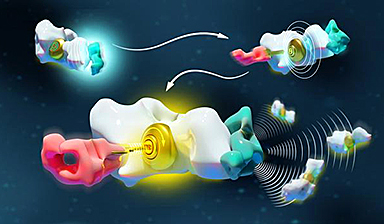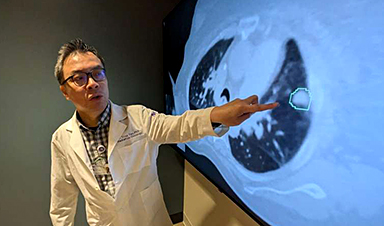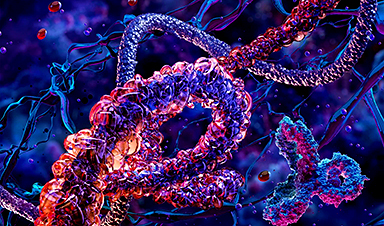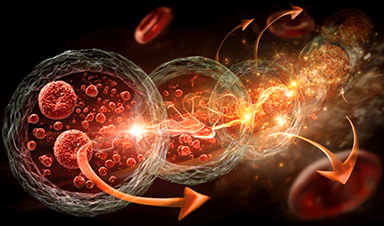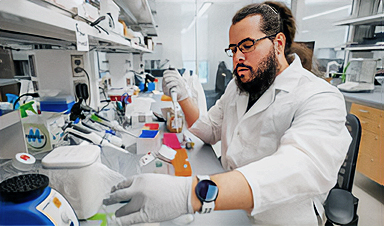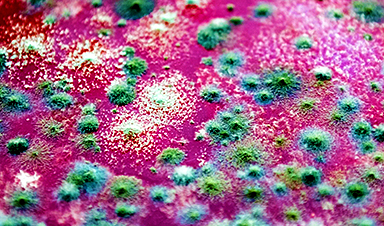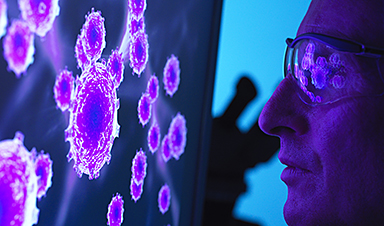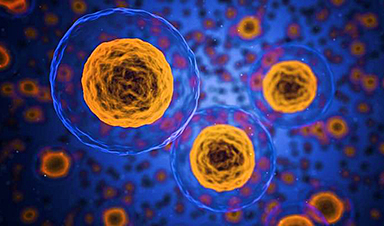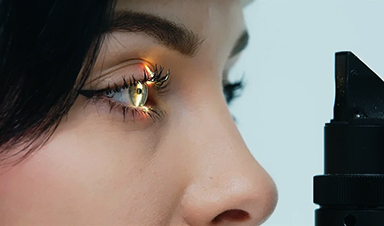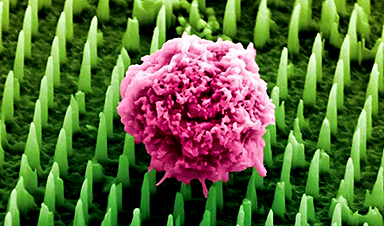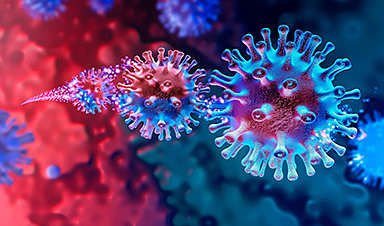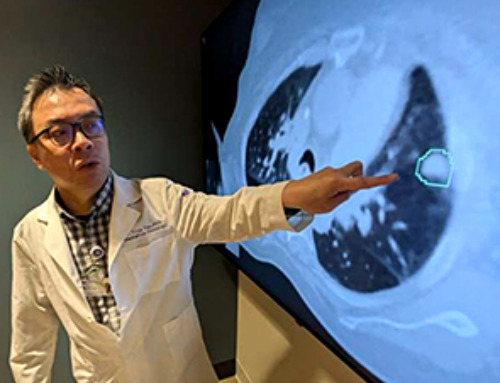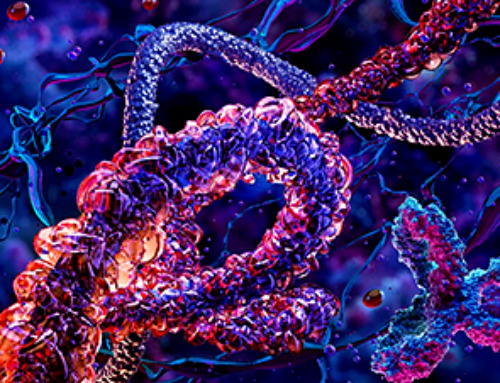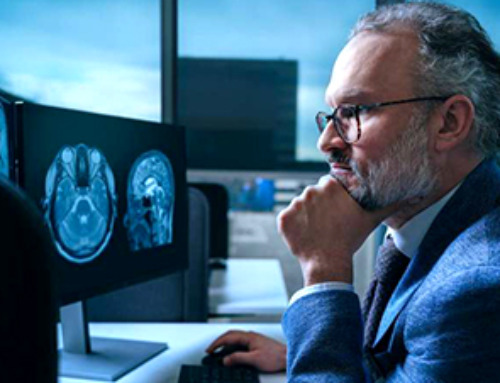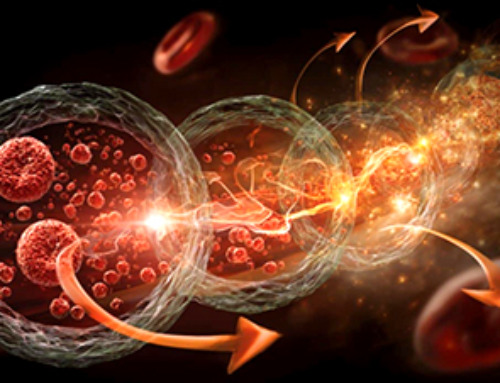| Two molecular languages at the origin of life have been successfully recreated and mathematically validated, thanks to pioneering work by Canadian scientists at Université de Montréal.
Living organisms are made up of billions of nanomachines and nanostructures that communicate to create higher-order entities able to do many essential things, such as moving, thinking, surviving and reproducing. |
|
| “The key to life’s emergence relies on the development of molecular languages – also called signalling mechanisms – which ensure that all molecules in living organisms are working together to achieve specific tasks,” said the study’s principal investigator, UdeM bioengineering professor Alexis Vallée-Bélisle. | |
| In yeasts, for example, upon detecting and binding a mating pheromone, billions of molecules will communicate and coordinate their activities to initiate union, said Vallée-Bélisle, holder of a Canada Research Chair in Bioengineering and Bionanotechnology. | |
| “As we enter the era of nanotechnology, many scientists believe that the key to designing and programming more complex and useful artificial nanosystems relies on our ability to understand and better employ molecular languages developed by living organisms,” he said. | |
Two types of languages |
|
| One well-known molecular language is allostery. The mechanism of this language is “lock-and-key”: a molecule binds and modifies the structure of another molecule, directing it to trigger or inhibit an activity. | |
| Another, lesser-known molecular language is multivalency, also known as the chelate effect. It works like a puzzle: as one molecule binds to another, it facilitates (or not) the binding of a third molecule by simply increasing its binding interface. | |
| Although these two languages are observed in all molecular systems of all living organisms, it is only recently that scientists have started to understand their rules and principles – and so use these languages to design and program novel artificial nanotechnologies. | |
| “Given the complexity of natural nanosystems, before now nobody was able to compare the basic rules, advantage or limitations of these two languages on the same system,” said Vallée-Bélisle. | |
| To do so, his doctoral student Dominic Lauzon, first author of the study, had the idea of creating a DNA-based molecular system that could function using both languages. “DNA is like Lego bricks for nanoengineers,” said Lauzon. “It’s a remarkable molecule that offers simple, programmable and easy-to-use chemistry.” | |
Simple mathematical equations to detect antibodies |
|
| The researchers found that simple mathematical equations could well describe both languages, which unravelled the parameters and design rules to program the communication between molecules within a nanosystem. | |
| For example, while the multivalent language enabled control of both the sensitivity and cooperativity of the activation or deactivation of the molecules, the corresponding allosteric translation only enabled control of the sensitivity of the response. | |
| With this new understanding at hand, the researchers used the language of multivalency to design and engineer a programmable antibody sensor that allows the detection of antibodies over different ranges of concentration. | |
| “As shown with the recent pandemic, our ability to precisely monitor the concentration of antibodies in the general population is a powerful tool to determine the people’s individual and collective immunity,” said Vallée-Bélisle. | |
| In addition to expanding the synthetic toolbox to create the next generation of nanotechnology, the scientist’s discovery also shines a light on why some natural nanosystems may have selected one language over another to communicate chemical information. |
News
AI matches doctors in mapping lung tumors for radiation therapy
In radiation therapy, precision can save lives. Oncologists must carefully map the size and location of a tumor before delivering high-dose radiation to destroy cancer cells while sparing healthy tissue. But this process, called [...]
Scientists Finally “See” Key Protein That Controls Inflammation
Researchers used advanced microscopy to uncover important protein structures. For the first time, two important protein structures in the human body are being visualized, thanks in part to cutting-edge technology at the University of [...]
AI tool detects 9 types of dementia from a single brain scan
Mayo Clinic researchers have developed a new artificial intelligence (AI) tool that helps clinicians identify brain activity patterns linked to nine types of dementia, including Alzheimer's disease, using a single, widely available scan—a transformative [...]
Is plastic packaging putting more than just food on your plate?
New research reveals that common food packaging and utensils can shed microscopic plastics into our food, prompting urgent calls for stricter testing and updated regulations to protect public health. Beyond microplastics: The analysis intentionally [...]
Aging Spreads Through the Bloodstream
Summary: New research reveals that aging isn’t just a local cellular process—it can spread throughout the body via the bloodstream. A redox-sensitive protein called ReHMGB1, secreted by senescent cells, was found to trigger aging features [...]
AI and nanomedicine find rare biomarkers for prostrate cancer and atherosclerosis
Imagine a stadium packed with 75,000 fans, all wearing green and white jerseys—except one person in a solid green shirt. Finding that person would be tough. That's how hard it is for scientists to [...]
Are Pesticides Breeding the Next Pandemic? Experts Warn of Fungal Superbugs
Fungicides used in agriculture have been linked to an increase in resistance to antifungal drugs in both humans and animals. Fungal infections are on the rise, and two UC Davis infectious disease experts, Dr. George Thompson [...]
Scientists Crack the 500-Million-Year-Old Code That Controls Your Immune System
A collaborative team from Penn Medicine and Penn Engineering has uncovered the mathematical principles behind a 500-million-year-old protein network that determines whether foreign materials are recognized as friend or foe. How does your body [...]
Team discovers how tiny parts of cells stay organized, new insights for blocking cancer growth
A team of international researchers led by scientists at City of Hope provides the most thorough account yet of an elusive target for cancer treatment. Published in Science Advances, the study suggests a complex signaling [...]
Nanomaterials in Ophthalmology: A Review
Eye diseases are becoming more common. In 2020, over 250 million people had mild vision problems, and 295 million experienced moderate to severe ocular conditions. In response, researchers are turning to nanotechnology and nanomaterials—tools that are transforming [...]
Natural Plant Extract Removes up to 90% of Microplastics From Water
Researchers found that natural polymers derived from okra and fenugreek are highly effective at removing microplastics from water. The same sticky substances that make okra slimy and give fenugreek its gel-like texture could help [...]
Instant coffee may damage your eyes, genetic study finds
A new genetic study shows that just one extra cup of instant coffee a day could significantly increase your risk of developing dry AMD, shedding fresh light on how our daily beverage choices may [...]
Nanoneedle patch offers painless alternative to traditional cancer biopsies
A patch containing tens of millions of microscopic nanoneedles could soon replace traditional biopsies, scientists have found. The patch offers a painless and less invasive alternative for millions of patients worldwide who undergo biopsies [...]
Small antibodies provide broad protection against SARS coronaviruses
Scientists have discovered a unique class of small antibodies that are strongly protective against a wide range of SARS coronaviruses, including SARS-CoV-1 and numerous early and recent SARS-CoV-2 variants. The unique antibodies target an [...]
Controlling This One Molecule Could Halt Alzheimer’s in Its Tracks
New research identifies the immune molecule STING as a driver of brain damage in Alzheimer’s. A new approach to Alzheimer’s disease has led to an exciting discovery that could help stop the devastating cognitive decline [...]
Cyborg tadpoles are helping us learn how brain development starts
How does our brain, which is capable of generating complex thoughts, actions and even self-reflection, grow out of essentially nothing? An experiment in tadpoles, in which an electronic implant was incorporated into a precursor [...]
